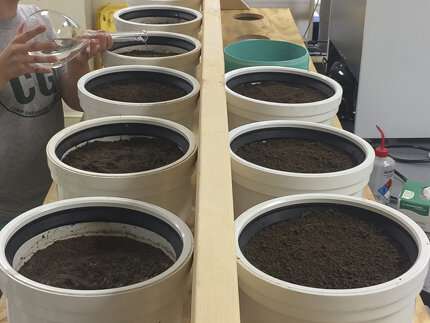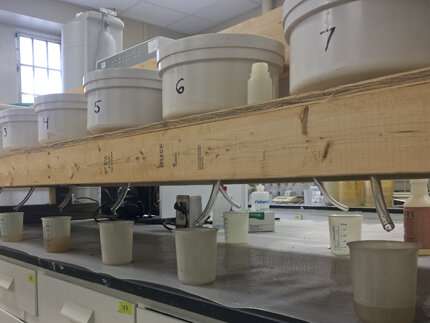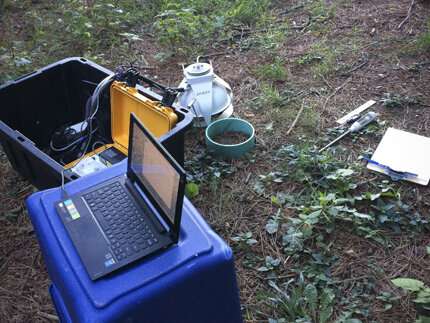Do soils need a low-salt diet?

Doctors often tell their patients to reduce their salt intake as part of a healthy lifestyle. When we start looking at food labels, we may find salt in surprising places—like baked goods, drinks and canned foods.
While you may try to keep an eye on your personal salt intake, you have probably never given much thought to how much salt there is in the soil under your feet. As many people are finding salt creeping into their diets, scientists are seeing increased levels of salt in water sources.
"There is a significant increase in salinity in freshwater systems, including water used for irrigation," explains Meredith Steele. Steele is an Assistant Professor of Urban Ecosystems and Watershed Biogeochemistry at Virginia Tech.
Steele thought if there is salt in irrigation water, there might be a buildup of salt in soil. High levels of salt can damage soil microbes and plants. Most research on soil salinity has focused on these situations. Steele wondered if small amounts of salt could change the chemistry or biology of soils.
To determine if salt concentrations would change soil, Steele's team started with soil that had no history of salt exposure. The researchers compared soil watered without salt to soils watered with slight concentrations of one salt. The salts included sodium chloride (table salt), potassium chloride, and calcium chloride. All of these salts are natural in our environment.

The research used salt concentrations common in nature. The salt concentrations in the experiment were 700 times less salty than seawater. In this way, the experiment demonstrated what could happen if soils are flooded by a nearby stream or if farmers irrigate fields using water nearby. The experiment ran for 90 days.
One thing the researchers measured was soil respiration. Soil respiration is the amount of carbon dioxide gas released from the soil. In this case, the carbon dioxide was from the microbes in the soil. Just like us, these microbes are living organisms that are "exhaling" the carbon dioxide gas.
Steele and colleagues found soils irrigated with saltwater release more carbon dioxide. But, calcium chloride had less effect on the carbon dioxide emissions than the sodium chloride and potassium chloride. The small increase in potassium and sodium resulted in a 20% increase compared to the control, while the calcium chloride treatment only resulted in a 9% increase.

This research shows that farmers may need to monitor for salt in floodwaters, irrigation water, and even fertilizers. Steele says, "This has really not been on our radar, especially in the eastern United States." In the eastern U.S., where there is more rain, there has been less concern about salt building up in the soil.
Carbon dioxide is a greenhouse gas that contributes to global warming. Understanding this relationship between soils and saltwater is important for scientists studying climate change.
More information: Rethinking Salty Soils: The Effects of Low Salt Concentrations on Soil Carbon. scisoc.confex.com/scisoc/2019a … app.cgi/Paper/122635
Provided by American Society of Agronomy



















